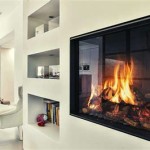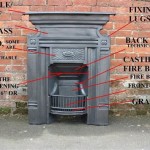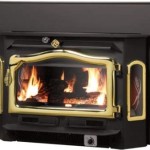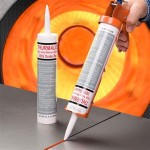Mounting a TV Above a Rock Fireplace: Considerations and Best Practices
Mounting a television above a rock fireplace presents a unique set of challenges and considerations compared to standard wall mounting. While the aesthetic appeal of combining a large screen with the rustic charm of a stone fireplace is undeniable, careful planning and execution are crucial to ensure a safe, functional, and visually pleasing result. Factors ranging from heat management to structural integrity must be thoroughly evaluated before commencing the installation process.
This article will explore the key aspects of mounting a TV above a rock fireplace, providing insights into the challenges, potential solutions, and best practices to achieve a successful installation. It will delve into considerations regarding heat exposure, structural mounting techniques, cable management, and viewing angles, offering a comprehensive guide for homeowners and installers alike.
Understanding the Challenges: Heat and Structural Integrity
The primary concerns when mounting a television above a fireplace are heat exposure and structural stability. Fireplaces, even those primarily used for aesthetic purposes, generate significant heat that can damage electronic components. Modern televisions are designed to operate within specific temperature ranges, and exceeding these limits can lead to component failure, screen discoloration, or reduced lifespan. Therefore, mitigating the effects of heat is a critical first step.
The structural integrity of the rock face itself also poses a challenge. Natural stone, cultured stone, and brick veneers each have unique characteristics that influence their ability to support the weight of a television. Directly attaching a TV mount to loose or poorly adhered stone can result in the mount detaching from the wall, posing a significant safety hazard. Consequently, a thorough assessment of the stone's condition and the wall's underlying structure is paramount.
Furthermore, the type of fireplace – whether it's a wood-burning, gas, or electric model – will have a significant impact on the amount of heat generated and its distribution. Wood-burning fireplaces typically produce the most heat, requiring more extensive heat mitigation strategies. Gas fireplaces generate less heat but still necessitate careful consideration. Electric fireplaces, while generating the least amount of heat, may still require some form of heat shielding to protect the television.
Strategies for Mitigating Heat Exposure
Several strategies can be employed to minimize the harmful effects of heat on a television mounted above a fireplace. The first and most crucial step is to measure the temperature above the mantel during fireplace operation. This can be achieved using a thermometer or, more accurately, a thermal imaging camera. The data collected will inform the choice of heat mitigation techniques.
A prominent solution involves installing a mantel or extending the existing mantel to deflect heat away from the television. The mantel acts as a barrier, preventing rising heat from directly contacting the TV screen and components. The deeper the mantel, the more effective it will be at deflecting heat. The material of the mantel also plays a role; non-combustible materials like stone or metal are preferable to wood.
Another approach is to create an air gap between the back of the television and the rock face. This can be accomplished using standoffs or a tilting TV mount that allows for increased ventilation. The air gap facilitates airflow, preventing heat from building up around the television. Open-backed TV stands can also contribute to improved ventilation.
Heat shields can be installed to further protect the television. These shields are typically made of metal or reflective materials and are designed to deflect radiant heat away from the TV. Some commercially available TV mounts incorporate built-in heat shields. It’s crucial to consider the aesthetics of the heat shield to ensure it blends seamlessly with the fireplace and surrounding decor.
Finally, minimizing the use of the fireplace can also extend the lifespan of the television. Utilizing alternative heating methods or limiting fireplace use to special occasions can significantly reduce heat exposure. When the fireplace is in use, closely monitor the temperature above the mantel to ensure it remains within acceptable limits.
Secure Mounting Techniques for Rock Fireplaces
Properly securing the TV mount to the rock fireplace is essential for safety and stability. The mounting method will depend on the type of rock, its adhesion to the wall, and the underlying structure. Simply screwing into the rock surface is rarely sufficient and can lead to failure.
One common approach is to attach the TV mount directly to the wall studs behind the rock face. This requires locating the studs using a stud finder or other means, drilling through the rock, and securing the mount to the studs using lag bolts. This method provides a solid and reliable anchor point for the television. However, accurately locating the studs can be challenging, especially if the rock veneer is thick or uneven.
Another method involves using a mounting plate that spans multiple studs. This distributes the weight of the television across a wider area, reducing stress on individual studs. The mounting plate is attached to the studs with lag bolts, and the TV mount is then attached to the mounting plate. This approach provides added stability and is particularly useful for larger and heavier televisions.
For situations where accessing the studs is difficult or impossible, specialized anchors designed for masonry can be used. These anchors expand within the rock or brick, providing a secure hold. However, the holding power of masonry anchors is generally less than that of lag bolts into studs, so it's crucial to choose anchors that are rated to support the weight of the television with a significant safety margin. Proper installation of masonry anchors is essential; following the manufacturer's instructions carefully is paramount.
Regardless of the mounting method chosen, it is crucial to use a level to ensure the TV mount is perfectly aligned. An unlevel mount can not only be visually unappealing but also put undue stress on the mounting hardware. Before tightening all the fasteners, double-check the level to ensure accuracy.
Cable Management and Aesthetics
Effective cable management is crucial for maintaining a clean and organized appearance when mounting a TV above a rock fireplace. Dangling cables can detract from the aesthetic appeal of the setup and pose a safety hazard. Various solutions can be employed to conceal and organize the cables.
One option is to run the cables through a conduit or cable raceway. These are typically plastic or metal channels that attach to the wall and conceal the cables within. Conduits can be painted to match the color of the rock, making them less noticeable. It’s important to choose a conduit that is large enough to accommodate all the necessary cables, including power, HDMI, and audio cables.
Another approach is to run the cables behind the rock face, if possible. This requires drilling holes through the rock to route the cables from the TV to the desired location. This method provides a very clean and seamless look, but it can be more challenging to execute and may require the expertise of a professional installer. It is crucial to ensure that the holes are drilled in a discreet location and that the cables are properly secured to prevent them from falling behind the rock.
Cable ties and Velcro straps can be used to bundle the cables together and prevent them from tangling. These accessories help to keep the cables organized and prevent them from becoming a visual eyesore. Adhesive cable clips can also be used to secure the cables to the wall or the back of the TV stand.
Consider the placement of power outlets and cable connections. If necessary, relocate or add new outlets to minimize the visibility of cables. Using a surge protector is also recommended to protect the television from power surges. Wireless HDMI transmitters can eliminate the need for running HDMI cables across the wall, providing a cleaner and more streamlined look.
Viewing Angle and Ergonomics
The height at which the television is mounted above the fireplace will significantly impact the viewing angle and overall viewing experience. Mounting the TV too high can lead to neck strain and discomfort, especially during prolonged viewing sessions. The ideal viewing angle is typically considered to be at or slightly below eye level when seated.
To determine the optimal mounting height, measure the distance from the floor to the viewer's eye level when seated. The center of the TV screen should be at or slightly below this height. In many cases, this will require mounting the TV lower than originally anticipated, potentially impacting the aesthetic balance of the fireplace and television arrangement.
Tilting TV mounts can help to improve the viewing angle, especially when the TV is mounted higher than ideal. Tilting the screen downwards can compensate for the increased height and provide a more comfortable viewing experience. However, tilting the screen too much can distort the image and reduce viewing quality. Experiment with different tilt angles to find the optimal setting.
Consider the size of the television and the distance from the viewing area. Larger televisions require a greater viewing distance to avoid eye strain. A general guideline is to multiply the screen size (in inches) by 1.5 to determine the minimum viewing distance (in inches). For example, a 65-inch television should be viewed from at least 97.5 inches (approximately 8 feet) away.
Ultimately, the ideal mounting height and viewing angle will depend on individual preferences and the specific characteristics of the room. Experiment with different configurations to find the setup that provides the most comfortable and enjoyable viewing experience. Consulting with a professional installer can provide valuable insights and ensure that the television is mounted at the optimal height and angle.

Natural Stone Fireplaces With Wall Mount Television Design Ideas

Mounting A Tv Above Fireplace With Full Tutorial Fixthisbuildthat

Hanging A Tv On Rock Wall

How To Hang Tv On Stone Fireplace In 6 Proven Steps Delight

How To Mount Tv Into Stone Above Fireplace Ft Collins Co

Installing A Tv On Stacked Stone Wall

Natural Stone Fireplaces With Wall Mount Television Design Ideas

Mantelmount How To Mount Your Tv Above A Fireplace Infarrantly Creative

Professionally Installed Tv On Rock Or Stone Fireplace Lexington Ky Platinum Audio Visual

Can I Mount My Tv Above The Fireplace
Related Posts








